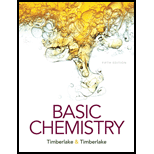
(a)
Interpretation:
The name of the N3- ion should be determined.
Concept Introduction:
Any element which looses electrons in its molten or aqueous state to form a positively charged ion is known as cation whereas an element which gains electron in molten or aqueous state is known as anion. An ionic compound is formed by these cations and anions. The electrostatic forces of attraction are responsible for the formation of these compounds and they have ionic bond present between these cations and anions in the lattice structure.
(c)
Interpretation:
The name of the Mg2+ ion should be determined.
Concept Introduction:
Any element which looses electrons in its molten or aqueous state to form a positively charged ion is known as cation whereas an element which gains electron in molten or aqueous state is known as anion. An ionic compound is formed by these cations and anions. The electrostatic forces of attraction are responsible for the formation of these compounds and they have ionic bond present between these cations and anions in the lattice structure.
(c)
Interpretation:
The name of the O2- ion should be determined.
Concept Introduction:
Any element which looses electrons in its molten or aqueous state to form a positively charged ion is known as cation whereas an element which gains electron in molten or aqueous state is known as anion. An ionic compound is formed by these cations and anions. The electrostatic forces of attraction are responsible for the formation of these compounds and they have ionic bond present between these cations and anions in the lattice structure.
(d)
Interpretation:
The name of the Al3- ion should be determined.
Concept Introduction:
Any element which looses electrons in its molten or aqueous state to form a positively charged ion is known as cation whereas an element which gains electron in molten or aqueous state is known as anion. An ionic compound is formed by these cations and anions. The electrostatic forces of attraction are responsible for the formation of these compounds and they have ionic bond present between these cations and anions in the lattice structure.
Want to see the full answer?
Check out a sample textbook solution
Chapter 6 Solutions
Basic Chemistry (5th Edition)
- Pls help.arrow_forward16) A 2.0 L flask containing 2.0 x 10-3 mol H2(g), 3.0 x 10-3 mol Cl2(g), and 4.0 x 10-3 mol HCl(g) at equilibrium. This system is represented by the following chemical equation: H2 (g) + Cl2 (g) → 2HCl(g) Calculate the equilibrium constant for this reaction.arrow_forward7) The pH of a 0.05M solution of HCl(aq) at 25°C is a. 1.3 b. 2.3 c. 3.3 d. 12.7arrow_forward
- 11) The Ksp expression for copper (II) sulfate is: a. [Cu2+][SO4²¯] b. [Cu²+]² [SO4²]² c. [Cu²+]²[SO4²] d. [CuSO4] 12) Which of the following is true about a chemical system in equilibrium? a. All chemical reactions have stopped b. The concentration of reactants is equal to the concertation of products c. The forward and reverse reaction rates become equal d. The system will remain at equilibrium regardless of any external factorsarrow_forward21) Explain the difference between the rate of a reaction and the extent of a reaction. Why are both of these concepts important, if you are a chemical engineer that is trying to develop a process to produce a large volume of a specific type of chemical compound?arrow_forwardPls help.arrow_forward
 ChemistryChemistryISBN:9781305957404Author:Steven S. Zumdahl, Susan A. Zumdahl, Donald J. DeCostePublisher:Cengage Learning
ChemistryChemistryISBN:9781305957404Author:Steven S. Zumdahl, Susan A. Zumdahl, Donald J. DeCostePublisher:Cengage Learning ChemistryChemistryISBN:9781259911156Author:Raymond Chang Dr., Jason Overby ProfessorPublisher:McGraw-Hill Education
ChemistryChemistryISBN:9781259911156Author:Raymond Chang Dr., Jason Overby ProfessorPublisher:McGraw-Hill Education Principles of Instrumental AnalysisChemistryISBN:9781305577213Author:Douglas A. Skoog, F. James Holler, Stanley R. CrouchPublisher:Cengage Learning
Principles of Instrumental AnalysisChemistryISBN:9781305577213Author:Douglas A. Skoog, F. James Holler, Stanley R. CrouchPublisher:Cengage Learning Organic ChemistryChemistryISBN:9780078021558Author:Janice Gorzynski Smith Dr.Publisher:McGraw-Hill Education
Organic ChemistryChemistryISBN:9780078021558Author:Janice Gorzynski Smith Dr.Publisher:McGraw-Hill Education Chemistry: Principles and ReactionsChemistryISBN:9781305079373Author:William L. Masterton, Cecile N. HurleyPublisher:Cengage Learning
Chemistry: Principles and ReactionsChemistryISBN:9781305079373Author:William L. Masterton, Cecile N. HurleyPublisher:Cengage Learning Elementary Principles of Chemical Processes, Bind...ChemistryISBN:9781118431221Author:Richard M. Felder, Ronald W. Rousseau, Lisa G. BullardPublisher:WILEY
Elementary Principles of Chemical Processes, Bind...ChemistryISBN:9781118431221Author:Richard M. Felder, Ronald W. Rousseau, Lisa G. BullardPublisher:WILEY





